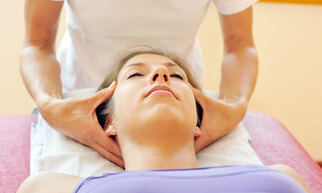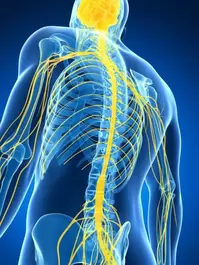One Hour Craniosacral Therapy Session $90
What is Craniosacral Therapy?
In a nutshell, it is a very light touch modality that is done with your clothes on. Careful attention is paid to the rhythmic and energetic manifestations of the body. Gentle touch is applied in harmony with the indications received from the body, on the cranial bones and at the diaphragms. Even though the touch is very light, the results can be very profound. It is effective in treating injury and pain. Shoulder, neck, and lower back pain are greatly eased through this work.
The gentle and supportive techniques of Craniosacral treatments, which work with the tissue at the rate it is ready to respond, hold the key to releasing the tissue memory and the pattern of pain at that location.
It is often used in conjunction with acupuncture, chiropractic, homeopathy, herbal remedies, stone medicine, psychotherapy, vision therapy and traditional medicine.
The gentle and supportive techniques of Craniosacral treatments, which work with the tissue at the rate it is ready to respond, hold the key to releasing the tissue memory and the pattern of pain at that location.
It is often used in conjunction with acupuncture, chiropractic, homeopathy, herbal remedies, stone medicine, psychotherapy, vision therapy and traditional medicine.
A more detailed explanation as explained by Anthony P. Arnold, PhD in his book Rhythm and Touch, The Fundamentals of Craniosacral Therapy is...
The term craniosacral refers to the practitioner's focus on the spinal column, the bones of the head or cranium, and the structure of the spine and the sacrum. As an evaluative and monitoring tool, the craniosacral practice pays particular attention to the craniosacral rhythm, a slight swelling and contraction of the bones of the head, and a rotation around a central axis by the skeleton on each side of the body.
Another important element of this practice is the fascia. All body parts are encased within a network of fibrous connective tissue. The body's fascia or connective tissue is interconnected and continuous. For example, the fascia surrounding the heart is connected and continuous with the fascia surrounding the nearby ribs, lungs, arteries and muscles, and indirectly, with every other body organ.
The nerves of the brain and spinal cord are covered on its surface by specialized fascia. This extends out onto the nerves and helps modulate nerve electrical qualities.
Within the human body, it appears that tension and strain patterns in the muscles and connective tissues are at the base of improper alignment of the bones. Prolonged tightness and inflexibility of the fascia or muscles creates a slight but steady pull on the bones, restricting movement and even shifting the bone from proper alignment. This can be experience as recurring pain, tendency to repeated injuries in the same place, and resistance to simple manipulative treatment. Realignment of just the bones themselves, may create temporary relief, because the connective tissues are transmitting to the bones a set of forces that gradually ease them out of alignment again. Craniosacral therapy addresses the connective tissue more specifically, eventually easing the internal stress and allowing the total system to rediscover a more harmonious alignment.
The craniosacral rhythm indicates symmetry, the bones serve as positioning devices for the therapist's hands, and muscle or connective tissue softens as physical harmony returns.
The term craniosacral refers to the practitioner's focus on the spinal column, the bones of the head or cranium, and the structure of the spine and the sacrum. As an evaluative and monitoring tool, the craniosacral practice pays particular attention to the craniosacral rhythm, a slight swelling and contraction of the bones of the head, and a rotation around a central axis by the skeleton on each side of the body.
Another important element of this practice is the fascia. All body parts are encased within a network of fibrous connective tissue. The body's fascia or connective tissue is interconnected and continuous. For example, the fascia surrounding the heart is connected and continuous with the fascia surrounding the nearby ribs, lungs, arteries and muscles, and indirectly, with every other body organ.
The nerves of the brain and spinal cord are covered on its surface by specialized fascia. This extends out onto the nerves and helps modulate nerve electrical qualities.
Within the human body, it appears that tension and strain patterns in the muscles and connective tissues are at the base of improper alignment of the bones. Prolonged tightness and inflexibility of the fascia or muscles creates a slight but steady pull on the bones, restricting movement and even shifting the bone from proper alignment. This can be experience as recurring pain, tendency to repeated injuries in the same place, and resistance to simple manipulative treatment. Realignment of just the bones themselves, may create temporary relief, because the connective tissues are transmitting to the bones a set of forces that gradually ease them out of alignment again. Craniosacral therapy addresses the connective tissue more specifically, eventually easing the internal stress and allowing the total system to rediscover a more harmonious alignment.
The craniosacral rhythm indicates symmetry, the bones serve as positioning devices for the therapist's hands, and muscle or connective tissue softens as physical harmony returns.
Benefits of Craniosacral Therapy
- Joints impaired by injury or disease regain a wider range of motion
- Shoulder, neck, and lower back pain are greatly eased
- Chronic pain is relieved resulting in a new level of day-to-day functioning
- Original injuries are often revealed for those who suffer from pain and injury patterns
- Patterns are often experienced as inflammation, swelling, stiffness and inflexibility of the injured area
- Emotions repressed as a result of traumas and injuries are often released
- And more
What can it help?
- MIgraines and headaches
- Chronic neck and back pain
- Autism
- Coordination impairments
- Infant and childhood disorders
- Brain and spinal cord injuries
- Chronic fatigue
- Fibromyalgia
- TMJ syndrome
- Scoliosis
- Nervous system disorders
- Learning disabilities
- ADD/ADHD
- PTSD
- Orthopedic problems

